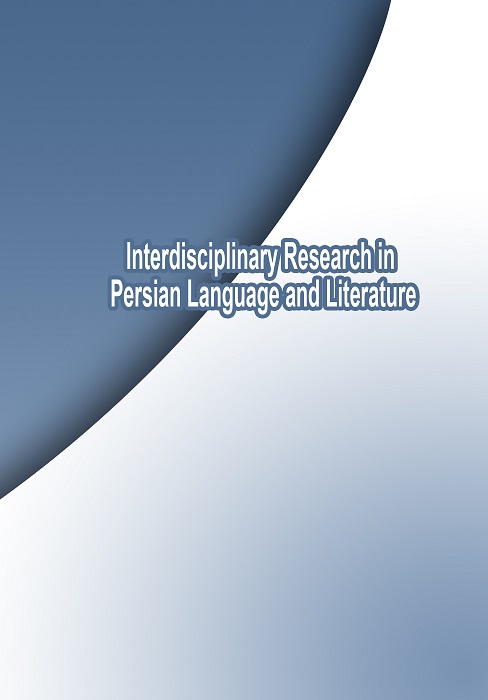Representation of social identity in Nima Yoshij's "khane ye Serivili".
Document Type : Research Paper
Authors
1 Assistant Professor of Persian Language and Literature, Payame Noor University, Isfahan, Iran
2 Assistant Professor, Department of Persian Language and Literature, Payam Noor University, Tehran, Iran
Abstract
After the establishment of the Pahlavi monarchy, fundamental changes took place in the structure of Iranian society in a way that affected all the biological, religious and cultural aspects of the country. The new manifestations of western civilization quickly replaced the popular traditional life and its reflection was widely reflected in the literature of the age. Nima Yoshij - the father of New Persian poetry - is among the pioneers who depicted the confusion resulting from these transformations in his poems. As his first long narrative poem in free format, "Khane ye Serivili" is one of the most prominent examples of contemporary poetry in this field, due to its social nature as well as its dramatic and dramatic context, which can also be considered in the field of semiotic studies. Is. Michael Rifater is one of the most prominent theorists of the 20th century in the field of semiotics and among hermeneutic structuralists, who explained the nature and function of poetry and unraveled its semantic difficulties by drawing a new model. is. The present study aims to analyze the "Serivili House" system of Nima in a descriptive-analytical way based on the theoretical foundations of Rifater. In addition, it seeks to prove that the mentioned poem is the product of the expansion of the origin of "creeping progress of modern civilization and how traditionalist societies surrendered to it". This origin has been expanded through processes such as descriptive systems, conversion, accumulation and determination of multiple factors. In this way
Keywords
منابع و مآخذ
- آتشی، منوچهر. (1382). نیما را باز هم بخوانیم. تهران: آمیتیس.
- آلگونه جونقانی، مسعود. (1396). «کاربست الگوی نشانهشناختی ریفاتر در خوانش شعر». پژوهش ادبیات معاصر جهان دانشگاه تهران، دورة22، شماره 1، صص 33-57.
- احمدی، بابک . (1382) ساختار و تأویل متن. تهران: مرکز.
- الیاده، میرچا. (1389) چشماندازهای اسطوره. ترجمة جلال ستاری، تهران: توس.
- اسکولز، رابرت. (1398) درآمدی بر ساختارگرایی در ادبیات، ترجمة فرزانه طاهری، تهران: آگاه.
- ایگلتون، تری. ( 1386) پیش درآمدی بر نظریة ادبی، ترجمة عباس مخبر، تهران: مرکز.
- برکت، بهزاد و طیبه افتخاری. (1389). «نشانه شناسی شعر: کاربست نظریة مایکل ریفاتر بر شعر ای مرز پرگهر فروغ فرخزاد»، پژوهش_های زبان و ادبیات تطبیقی دانشگاه تربیت مدّرس، دورة 1، شمارة4، صص110 -130.
- پاینده، حسین. (1397). نظریه و نقد ادبی، ج 2، تهران: سمت.
- پرستش، شهرام. (1378 ). سریویلی و جستجوی تباه ارزشهای متعالی، شعر، تابستان و پاییز، شمارة 26.ص 63-67.
- جورکش، شاپور. (1383). بوطیقای شعر نو، تهران: ققنوس.
- حجازی کناری، سیّدحسن. (1374). واژههای مازندرانی و ریشههای باستانی آن، ساری: شلفین.
- سوسور، فردینان. (1967) دورة زبانشناسی عمومی، ترجمة کورش صفوی، تهران: هرمس.
- سیّدحسینی، رضا. (1387). مکتبهای ادبی، تهران: نگاه.
- شمیسا، سیروس. (1383) داستان یک روح، تهران: فردوس.
- شوالیه، ژان و آلن گربران. (1384). فرهنگ نمادها، تهران: جیحون.
- کاریک، ایرناریما. (1384). دانشنامة نظریههای ادبی معاصر، ترجمة مهران مهاجر، تهران: آگه.
- گیرو، پی یر. (1380). نشانهشناسی، ترجمة محمد نبوی، تهران: آگه.
- محجوب، فرشته (1399). «نشانهشناسی تمثیل طوطی و بازرگان مثنوی بر پایة نظریه مایکل ریفاتر»، پژوهشهای ادب عرفانی، ش 45. پاییز و زمستان: 99-116.
- محسنی مرتضی، سیاوش حقجو و مرضیه حقیقی. (1392). سریویلی زندانی تقابلهای دوگانه(بررسی تقابلهای دوگانه در منظومة خانة سریویلی اثر نیما یوشیج). پژوهش زبان و ادبیات فارسی، ش 31. زمستان: 131-161.
- نبیلو، علیرضا. (1390). «کاربرد نظریة نشانهشناسی مایکل ریفاتر در تحلیل شعر ققنوس نیما»، پژوهشهای زبانشناختی در زبانهای خارجی دانشگاه تهران، دورة1، شمارة2، صص 81 ـ 93.
- وندادی، حسین. (1399). فرهنگ واژگان مازندرانی، تهران: هاوژین.
- یوشیج، نیما. (1376). مجموعة کامل نامههای نیما یوشیج، به همّت سیروس طاهباز، تهران: علمی.
- یونگ، کارل گوستاو. (1387). انسان و سمبولهایش. ترجمة محمود سلطانیه، تهران: جامی.
- Riffaterre,Michael (1978),Semiotics Of Poetry, 1.cd. Bloomingston :Indiana University Press.
- …………………(1983)Text Production. 1.ed. New York:Columbia.
Volume 2, Issue 2
September 2024Pages 147-168
- Receive Date: 06 March 2024
- Revise Date: 19 May 2024
- Accept Date: 05 August 2024
